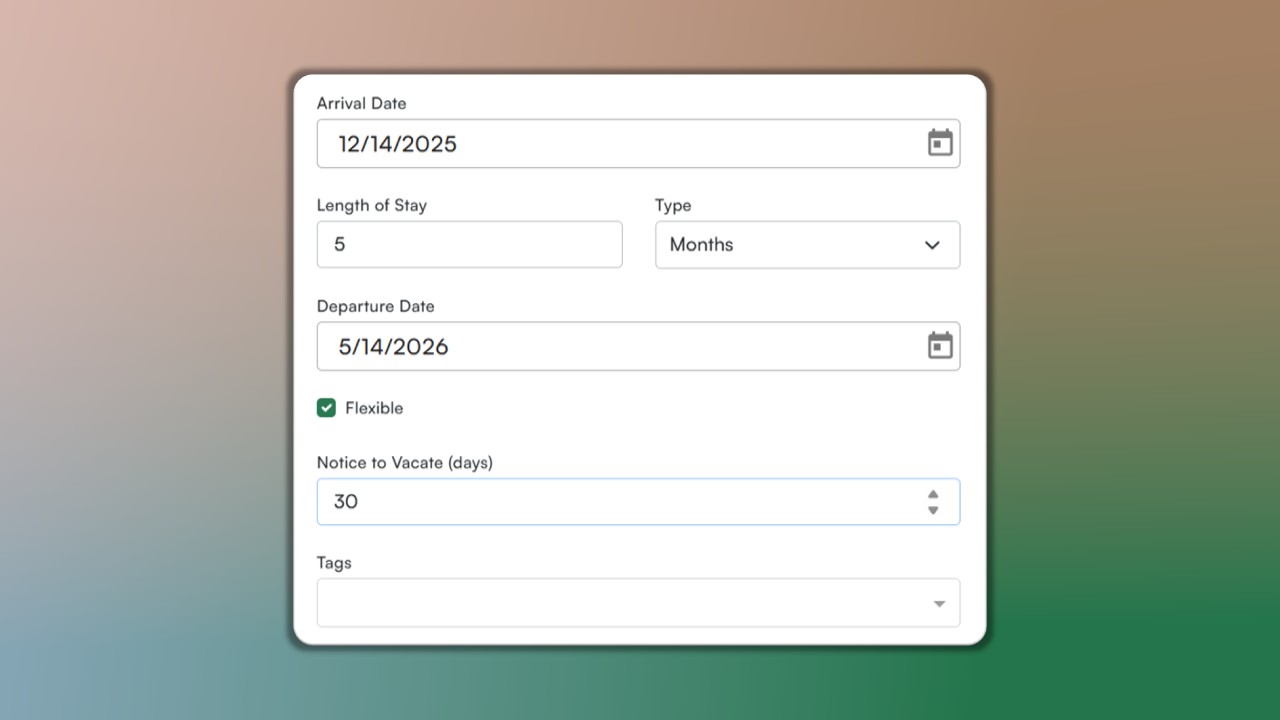(This is part 2 of a two-part article – you can read part 1 here)
The Application Process: Your First Line of Defense
The application process starts with a well-written listings ad featuring clear minimum requirements. This serves as your first filter in the screening process, ensuring you only deal with qualified applicants. Use a standardized rental application form, adhere to your minimum requirements, and open communication lines. A clear and transparent application process isn’t just a formality; It sets the stage for the landlord-tenant relationship and serves as an initial filter to weed out unsuitable applicants. Here’s how to make the most of it:
Setting and Enforcing Minimum Requirements
Before you even list your rental property, establish your minimum requirements. These could include a minimum credit score, income level, or rental history.
Clearly state these requirements in your listing to deter applicants who don’t meet the criteria from applying in the first place.
Example: If you require a 650 minimum credit score, make this clear in your listing. “Applicants must have a credit score of 650 or above. No exceptions.”
Where do you get good ideas for minimum requirements for your area and unit type? Easy, explore rental units/properties in your region that are similar to yours. Look at the ads those landlords have posted, inventory their minimum requirements, and use that as a basis for discovering your own. This gives you insight into the type of renter you could expect and helps ensure you remain competitive with comparable rental units in your area.
The Value of Minimum Requirements as a First Filter
By setting these minimum requirements, you’re creating an initial filter. This saves you time and reduces the number of applications you’ll need to sift through. It’s a win-win; you get more qualified applicants, and those who don’t meet the criteria know not to waste their time—or yours.
These same requirements are also a quick way to parse out those candidates that did not read or respect your ads requirements. So, the first thing you do when receiving a full application is check the prospect meets your requirements.
Using the Rental Application Form to Reinforce Minimum Requirements
Your rental application form should be designed to reinforce these minimum requirements. Include fields that directly relate to them and make them mandatory. This ensures you gather all the necessary information to make an informed decision.
Example: If one of your requirements is a minimum income of three times the rent, include a field in the “Monthly Income” application form and specify that proof of income will be required.
Digging Deeper: The Value of the Application Form
The application form is more than just a collection of names and numbers; it’s a treasure trove of information about your prospective tenant. Use it to find out about their lifestyle, habits, and reliability. Ask questions that give you insights into who they are as individuals.
Example: Include questions like, “Why are you moving?” or “Do you have pets?” The answers can provide valuable context. Someone moving for a job relocation may be more stable than someone who has moved multiple times in the last year for unspecified reasons.
Pro Tip: Use open-ended questions to encourage applicants to share more. This can give you a fuller picture of the applicant and help you spot any potential red flags.
By giving due attention to each of these aspects, you’re not just filling a vacancy but building a community, one tenant at a time. And the more you know about your potential tenants, the better your chances of creating a harmonious living environment for everyone involved.
Getting a better understanding of your potential tenants as people, and not just a set of criteria, is terrific, but when taking this approach, you must be careful. Fair Housing Laws often deal with many of these more personal information topics. Make sure you understand these laws and the type of considerations they forbid. Luckily, this is the topic of our next section.
Making Fair Housing Compliance Second Nature
Fair Housing Laws are more than just legal jargon; they’re a commitment to equality, ensuring that housing opportunities are available to all, regardless of race, religion, gender, and other protected categories. So, how can landlords and property managers make sense of it all?
Decoding Fair Housing Laws
Understanding Fair Housing Laws is the first step in ensuring you’re not inadvertently discriminating during tenant screening. The nuances are many, whether it’s refusing an application based on familial status or implementing a strict “no pets” policy that indirectly discriminates against those with service animals.
State and Local Nuances
Federal laws lay the groundwork, but state and local laws often add another layer of complexity. For example, some states extend protections to categories like sexual orientation and marital status. It’s crucial to be aware of these additional stipulations in your jurisdiction.
Where to Go to Deep Dive
HUD’s Fair Housing and Equal Opportunity Section:
- This specialized area of HUD’s website is a treasure trove of information on Fair Housing Laws.
- Website: HUD Fair Housing
National Fair Housing Alliance: Resources for Landlords:
- NFHA offers targeted resources to help landlords navigate Fair Housing Laws effectively.
- Website: NFHA Resources
Your State’s Fair Housing Guidelines:
- Each state has its own set of Fair Housing guidelines, often available through the state’s housing agency.
- Website: A quick search for “[Your State] Fair Housing Guidelines” should lead you to the right place.
Making Compliance a Habit
The key to successful and ethical tenant screening lies in making compliance with Fair Housing Laws a habit, not just a checkbox. This means continually educating yourself and your team, revisiting your screening criteria, and being mindful of these laws in every interaction with prospective tenants.
Over time, this constant attention and awareness will help you avoid legal pitfalls and also contribute to creating a more inclusive and equitable housing environment. It’s not just about adhering to the law; it’s about embodying the spirit of fairness and equality that these laws represent.
The Ultimate Tool for Streamlined Tenant Screening
Property management software is more than a convenience for tenant screening; it’s a strategic partner. It integrates various tools and practices, creating a cohesive platform tailored to your needs.
A unified platform for all your tenant screening needs brings efficiency, accuracy, and adaptability to your rental business. Choose a software that offers:
- comprehensive background check tools,
- customizable application processes,
- automates rent collection,
- provides excellent communication and
- provides a user-friendly interface for both landlords and tenants.
After diving deep into the complexities of tenant screening, from background checks to Fair Housing Laws, it’s clear that the process is multi-faceted and requires keen attention to detail. This is where the power of property management software comes into play. Imagine having a single integrated platform streamlining all these tasks and enhancing efficiency and compliance.
One of the standout features of advanced property management software is its ability to offer customizable applications and onboarding workflows. This means you can tailor the rental application form to include the questions and criteria most relevant to your properties. It’s not just a one-size-fits-all solution; it’s a tool that adapts to your unique needs.
In essence, property management software is not just a tool but a comprehensive solution that brings together all the elements of effective tenant screening. It’s about making your life easier while ensuring you provide equitable and professional service to all prospective tenants. DoorSpot has a full suite of features to simplify and standardize all aspects of tenant screening.
Conclusion: The Future of Tenant Screening
In conclusion, the art and science of tenant screening can be rewarding and efficient with the right property management software. Embrace these tools and practices to empower your rental business and make tenant screening a seamless part of your professional journey.
So, fellow landlords, are you ready to take your tenant screening to the next level? With these insights and tools like DoorSpot, you’re on your way to building successful and lasting relationships with your tenants.
Happy renting!
[Read Part 1 – Background Checks]






